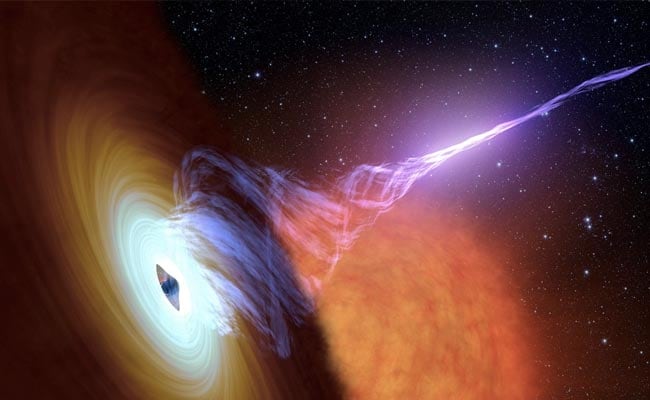Residing at the center of our spiral-shaped Milky Way galaxy is a beast – a supermassive black hole possessing 4 million times the mass of our sun and consuming any material including gas, dust and stars straying within its immense gravitational pull.. . . . . . . . . . . . . . . . . . . . . . . . . . . . . . . . . . . . . . . .
Scientists have been using the Event Horizon Telescope (EHT), a global network of observatories working collectively to observe radio sources associated with black holes, to study this Milky Way denizen and have set an announcement for Thursday that signals they may finally have secured an image of it. The black hole is called Sagittarius A, or SgrA.
The researchers involved in this international collaboration have declined to disclose the nature of their announcement ahead of scheduled news conferences but issued a news release calling it a “groundbreaking result on the center of our galaxy.”
In 2019, the EHT team unveiled the first-ever photo https://eventhorizontelescope.org/press-release-april-10-2019-astronomers-capture-first-image-black-hole of a black hole. The image – a glowing ring of red, yellow and white surrounding a dark center – showed the supermassive black hole at the center of another galaxy called Messier 87, or M87.
The researchers also have focused their work on Sagittarius A*, located about 26,000 light-years – the distance light travels in a year, 5.9 trillion miles (9.5 trillion km) – from Earth.
“One of the objects that we hope to observe with the Event Horizon Telescope… is our own black hole in our own backyard,” Harvard–Smithsonian Center for Astrophysics astrophysicist Sheperd Doeleman, the former EHT project director, said during a July 2021 scientific presentation.
Black holes are extraordinarily dense objects with gravity so powerful that not even light can escape.
There are different categories of black holes. The smallest are so-called stellar-mass black holes formed by the collapse of massive individual stars at the ends of their life cycles. There also are intermediate-mass black holes, a step up in mass. And finally there are the supermassive black holes that inhabit the center of most galaxies. These are thought to arise relatively soon after their galaxies are formed, devouring enormous amounts of material to achieve colossal size.
The EHT project was begun in 2012 to try to directly observe the immediate environment of a black hole. A black hole’s event horizon is the point of no return beyond which anything – stars, planets, gas, dust and all forms of electromagnetic radiation – gets dragged into oblivion.

